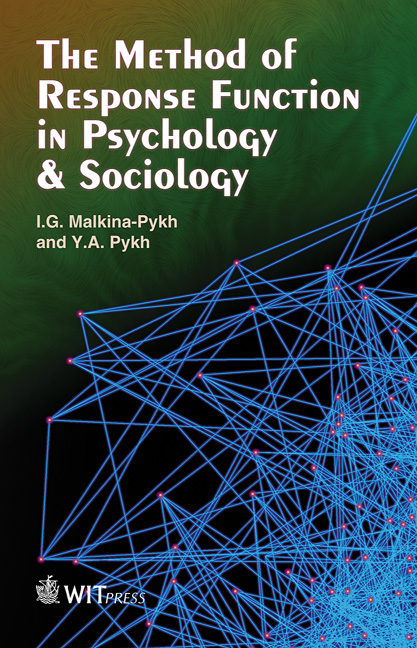The Method of Response Function in Psychology & Sociology
Authors: I.G. Malkina-Pykh and Y.A. Pykh, Russian Academy of Sciences, Russia
Price
£134.00 (free shipping)
ISBN
978-1-84564-686-8
eISBN
978-1-84564-687-5
Pages
268 + CD Content
Published
2013
Format
Hardback
Social (psychological and sociological) systems present considerable difficulties for modellers because of their complexity, multidimensionality, uncertainty, irreducibility, etc. This book proposes the method of response function (MRF) for the construction of purposeful, credible, integrated models of social systems from data and prior knowledge or information, overcoming some of the difficulties.
A semi-empirical, or “grey-box”, MRF model may be regarded as a trade-off between a knowledge-based model and a “black-box” (empirical) model. It may embody all the existing knowledge on the process (or a part thereof), and, in addition, it relies on parameterised functions, with parameters being determined from measurements.
Observations contain hidden information on the processes under consideration and one main purpose of the proposed method is to ‘‘extract’’ and describe these hidden relationships. Parameterisation offers ways to couple qualitative with quantitative analysis. This combination makes it possible to take into account all the phenomena that are not modelled with the required accuracy through prior knowledge. Although only a simplified picture of the processes is modelled, a “grey box” system model provides some insight into the system processes. These processes are featured by chains of causality, highlighting stressors and variables responsive to stressors. The method of response function is a nonlinear regression method that implies credible models in the sense that they are identifiable, and, hopefully, explains system output behaviour satisfactorily.
For case studies the authors selected the problems usually studied by psychologists and sociologists with statistical procedures, such as analysis of variance and discriminant analysis, based on the general linear model or one of its multivariate generalisations (structural equation models, etc.): disordered eating and obesity, subjective well-being and alexithymia. An accompanying CD-ROM contains the demonstration versions of three models that are discussed in the various chapters.
It is not intended to be a practical manual on how to do nonlinear fitting; rather, it considers broad aspects of model building in psychology and sociology. Also, it is well known that the teaching of quantitative methods in the standard psychology and/or sociology curriculum is limited to conventional data analysis methods (mainly linear models including regression, ANOVA and MANOVA), i.e. static statistical methodologies, without much exposure to other branches of mathematics. The book could thus be useful as a textbook in undergraduate as well as graduate and postgraduate courses in psychology and sociology.









